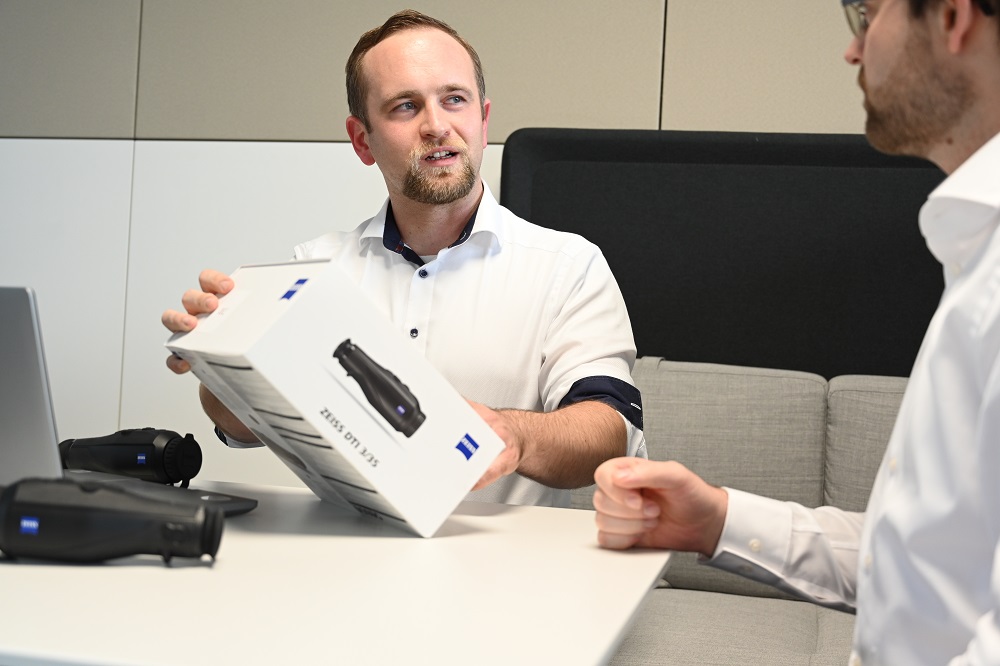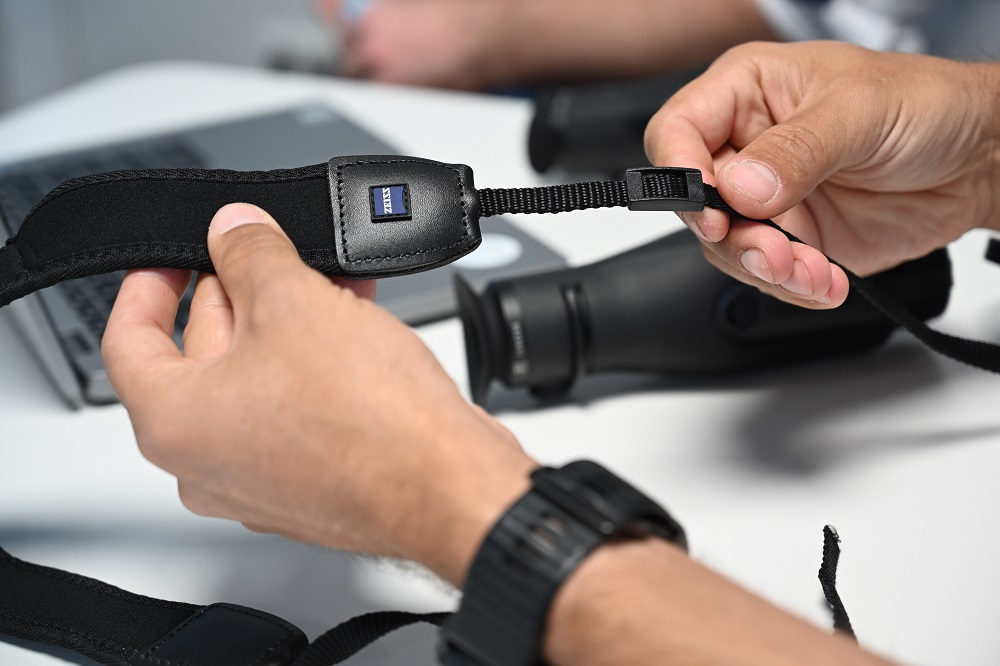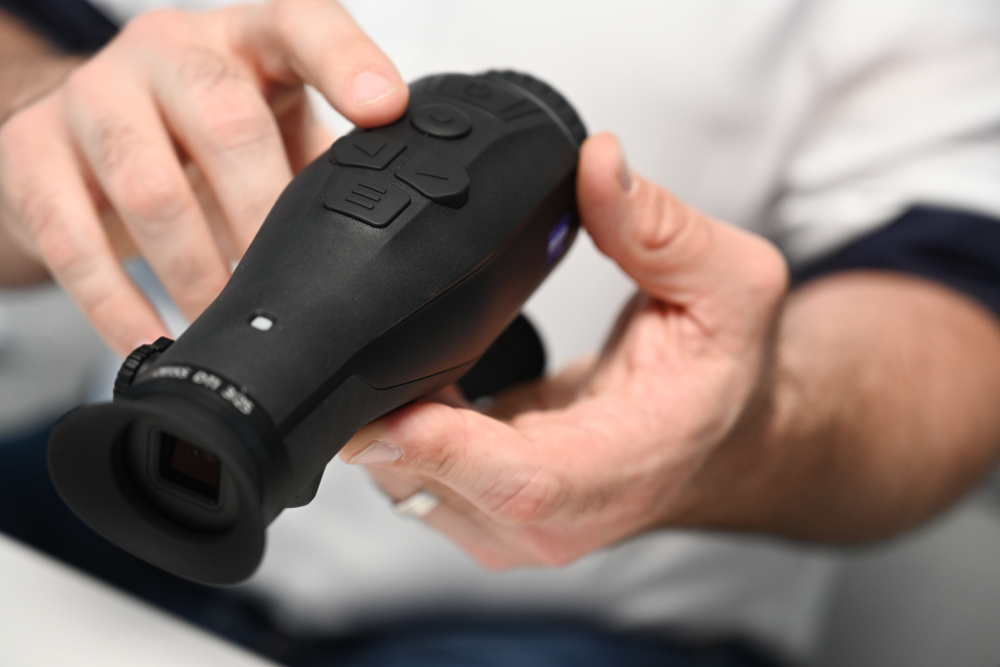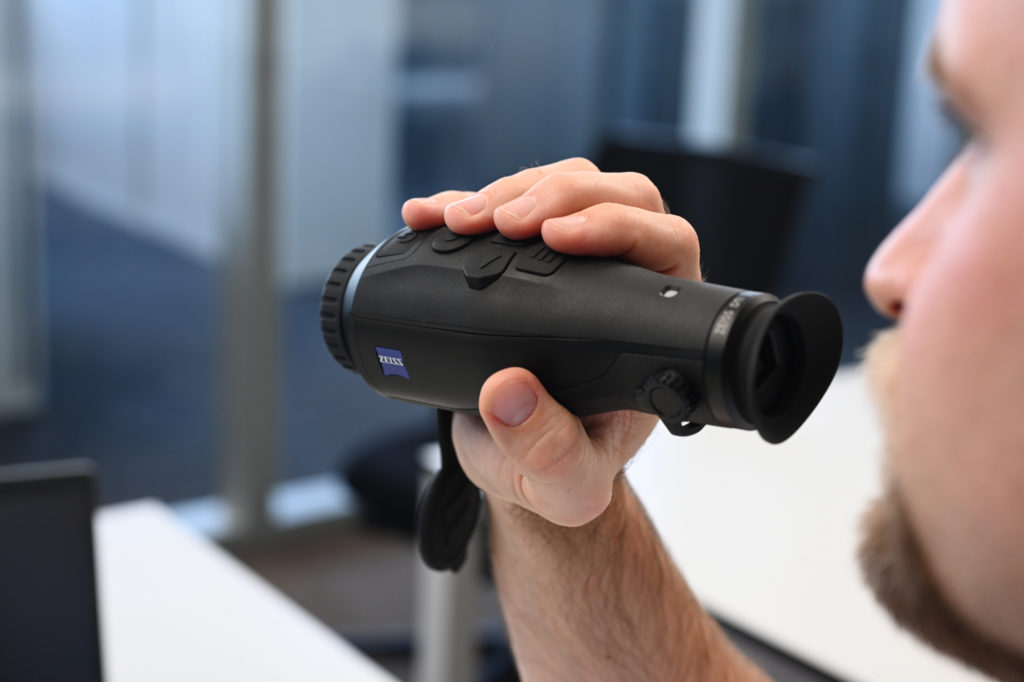How the ZEISS DTI was Developed and Why Category Management Played a Special Role in the Process
Thanks to its high-performance binoculars and spotting scopes, ZEISS has been popular with birders for decades. Increasing nature and bird watching at dusk and night not only brings completely new observation experiences, but also high demands on the equipment. Thermal imaging devices can be a helpful instrument in this regard, allowing you to access hidden observation situations, such as sleeping owls or particularly well-hidden species.
With the ZEISS DTI 3 thermal imaging camera, ZEISS opens up new dimensions in nature observation. In a short series of articles, we are taking a closer look at the crucial steps a ZEISS DTI goes through until it is available to customers at the store and beyond. Enjoy exciting insights into the origins of the DTI, the demanding tests ZEISS puts it through, and the comprehensive range of services the company offers, even long after the purchase.
In the first part of the four-part series, we talked with Tammo Lüken from Category Management about his responsibilities and the new DTI 3.
Tammo, as head of Category Management, you oversee all of our new products. Can you briefly describe the responsibilities of Category Management at ZEISS?
Tammo Lüken: “Category Management has an extremely wide range of tasks. We oversee new products launches right from the initial idea. What are the market requirements for the device, which customers will it appeal to, what features does a new device need? These are all fundamental questions that we discuss with our product developers.
After we have finalized the technical details, we continue to guide the product through its development. We get an impression of the feel of the product, for example, are buttons and controls arranged sensibly, is the image quality okay? It goes without saying that the sustainability of our packaging also plays a major role. We are also closely involved and focus on sustainable and recyclable materials. In essence, you can say that everything the customer sees and feels with a ZEISS product goes through us in Category Management.”

How is a new product actually created at ZEISS?
Tammo Lüken: “Identifying innovative technologies early on is very important. Directly in practice, in the field, my colleagues and I naturally often notice practical aspects of products that we could do better. We come up with initial new product concepts on the basis of a mix of both, hands-on experience and extensive research at trade shows, online, in conversations with bird watchers, and in discussions with R&D and Sales.“
Why did ZEISS launch a thermal imaging camera?
Tammo Lüken: “ZEISS is, of course, known for its traditional optical products such as spotting scopes and binoculars, which are particularly impressive during the night thanks to their unparalleled light transmission. Developing our own thermal imaging camera was simply the next logical step for us as night experts. With the DTI family, we will provide an entire range of products that will decisively complement our existing products. For birdwatchers and nature observers, this opens up a whole new dimension of observation, enabling particularly hidden situations to be captured thanks to the thermal imaging camera – whether at dusk or during the day.”
What did the team pay special attention to when developing the DTI?
Tammo Lüken: “After I was able to test numerous products from other manufacturers in the field, I noticed that the usability of many devices was lacking. The menus are sometimes rather hard to read and the small font used in the menu itself makes correctly configuring the device pain. In tense observation situations where the ability to operate the devices instinctively would be important, I triggered a photo instead of the zoom function, for example, due to the unfavorable arrangement of buttons. Or once I had a thermal imaging camera in one hand, binoculars in the other, and the heavy backpack on my back. In order to get one hand free I wanted to put down the thermal imaging camera – not a great idea in a muddy field

In this case, a carrying strap would have been great, of course. It is exactly such important details that not only me, but also other bird watchers notice while observing with thermal imaging cameras. We wanted to significantly improve upon these aspects with the DTI and offer a product that truly meets the needs of the target market.
It goes without saying that the image quality plays just as big a role. That’s why ensuring that the lens, sensor, image processing, and display are all designed to work together perfectly was one of our top priorities. This results in a detailed and high-contrast image that allows birdwatchers to accurately identify even the smallest details.
In addition, all of the DTI devices have a clear, easy-to-read, and intuitive menu. The devices can also be continuously enhanced via software updates. For this purpose, we speak with retailers and birdwatchers often to ensure that their feedback is effectively incorporated into any new updates.“
We developed the new DTI 3/25 specifically for bird watchers who need a large field of view at short distances. This means that constantly panning from left to right and back again to get a good view of an area at short range is now a thing of the past.“


Which of the DTI’s technical details is particularly important to you?
Tammo Lüken: “Besides the excellent optical quality, I find the Ergo Control concept thoroughly impressive. Thanks to Ergo Control, you get used to the arrangement of the buttons after only a few minutes, and you immediately know which button has which function. No more guessing or setting the camera down and trying to identify the various controls in the dark. Especially in tense situations, where any movement can cause the bird to scare away, this is very important. This is why the Ergo Control concept is the feature that actually excites me the most about the DTI.“
In the next part of our series, we will take a look at the technical implementation of the ZEISS thermal imaging camera and the role that System Engineering played in this process.